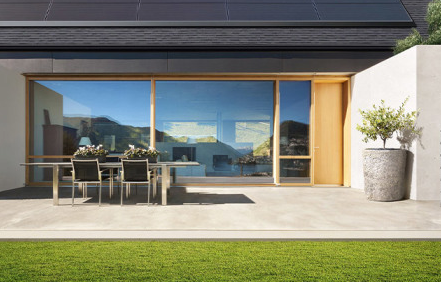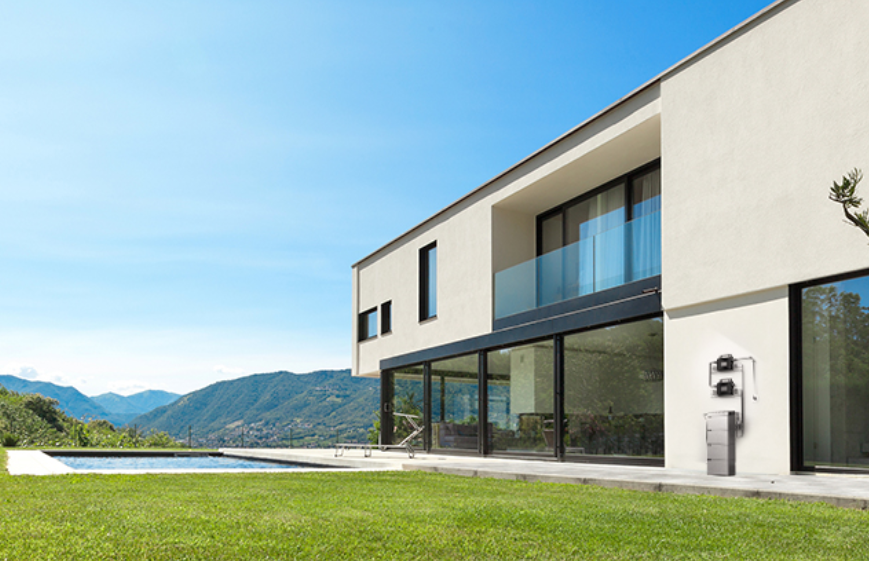In the world of solar energy, there are various installation options for integrating photovoltaic (PV) systems with energy storage. Depending on the available space, energy needs, and system design, homeowners can choose between courtyard, balcony, or rooftop solar systems. Each option has its own set of benefits and limitations based on installation space, efficiency, cost, and environmental factors.
1. Courtyard Photovoltaic Energy Storage Systems
Definition:
A courtyard photovoltaic energy storage system refers to a solar installation that is placed in the courtyard or private garden area of a home or building. This type of setup is common in houses with large outdoor spaces where the rooftop may not be suitable for installation due to shading, size constraints, or aesthetic concerns.

Key Features:
·Ground-Mounted Solar Panels: Solar panels are installed on the ground, typically in a yard or courtyard area, using ground mounts or tracking systems.
· Energy Storage Integration: Like other systems, batteries are used to store excess energy generated during the day for use at night or during cloudy periods.
Advantages:
· Larger Space for Panels: Provides ample space for larger solar arrays, which means the system can generate more power.
· Customization: Can be tailored to meet specific energy needs and can include tracking systems that follow the sun’s path for optimal energy generation.
· Minimal Shading Issues: With the right positioning, courtyard systems can be free from shading, increasing energy efficiency.
· Aesthetic Flexibility: Solar panels can be installed away from the house, which may preserve the home’s aesthetics.
Challenges:
· Requires Sufficient Space: Not suitable for urban environments where outdoor space is limited.
· Higher Installation Costs: Ground-mounted systems may have higher installation and maintenance costs due to the need for specialized equipment.
· Longer Distance to Grid: In some cases, the power storage system or connection to the grid may be farther from the home, leading to potentially higher cabling and electrical work costs.
2. Balcony Photovoltaic Energy Storage Systems
Definition:
A balcony solar energy storage system involves installing solar panels on a balcony in apartment buildings or homes with small outdoor areas. This system is ideal for renters or homeowners with limited space who want to generate their own electricity.
Key Features:
· Compact Panel Installation: Solar panels are mounted on the balcony railing or on a stand designed for easy setup and maintenance.
· Modular Design: These systems are often modular, allowing users to add more panels or batteries as needed.
· Plug-and-Play Systems: Many balcony solar kits are designed to be user-friendly and require minimal installation, with some plug-and-play solutions for renters or those in apartments with restrictions on permanent modifications.
Advantages:
· Ideal for Urban Areas: Perfect for apartment dwellers or city residents with limited roof space or no access to a rooftop.
· Space-Efficient: Utilizes small spaces like balconies, terraces, or railings to generate solar power, providing energy in densely populated urban settings.
· Affordable: These systems are generally more affordable than larger rooftop or courtyard systems.
· Ease of Installation: Many balcony solar systems are designed for DIY installation and can be mounted without professional help.
· No Need for Roof Modifications: The panels don’t require drilling or roof modification, which makes them ideal for renters.
Challenges:
· Limited Power Generation: Due to space constraints, balcony systems typically produce less energy compared to rooftop or courtyard systems. They may only power small appliances or contribute to partial energy savings.
· Shading: If the building is surrounded by taller structures, shading can reduce the system’s efficiency, especially in the early morning or late afternoon.
· Limited Battery Storage: While some systems have integrated battery storage, the capacity is usually smaller, making it challenging to store enough energy for long periods of use.
3. Rooftop Photovoltaic Energy Storage Systems
Definition:
Rooftop photovoltaic energy storage systems involve installing solar panels on the roof of a building or home. This is one of the most common and efficient ways to set up a solar power system, especially in areas with good sun exposure.

Key Features:
· Panel Installation on Roof: Solar panels are mounted on the roof, either on the surface or integrated into the roofing material itself (e.g., solar shingles).
· Battery Storage: The system includes battery storage to save excess energy for later use, ensuring that power is available during the night or on cloudy days.
· Grid-Tied or Off-Grid: These systems can either be connected to the grid for net metering or used off-grid with large storage batteries.
Advantages:
· Maximized Space: Rooftops offer larger areas for installing solar panels, making it easier to meet energy needs for an entire household or business.
· Higher Energy Production: With optimal positioning, rooftop solar systems can capture more sunlight throughout the day and produce more electricity than smaller systems like balcony solar systems.
· Better Performance: Rooftops typically have fewer shading issues and better sun exposure, leading to higher system efficiency.
· Longer Lifespan: Rooftop solar systems are usually built to last for 20-25 years and often come with warranties, making them a reliable long-term investment.
· Increase Property Value: Homes with solar energy systems typically see an increase in value, as they are attractive to buyers looking for energy-efficient homes.
Challenges:
· Higher Installation Costs: While rooftop systems produce more energy, the initial installation costs, including permitting, roofing, and electrical work, are often higher.
· Space Limitations: For small homes or buildings with limited roof space, rooftop systems may still have constraints, although they typically offer more space than balcony systems.
· Regulatory Approvals: Installing a rooftop system may require permits or approvals from the local government or homeowners association, which could delay the process.
Comparison Summary
|
Feature |
Courtyard Solar System |
Balcony Solar System |
Rooftop Solar System |
|
Installation Space |
Ground-mounted in a private yard |
Compact, uses balcony or terrace space |
Roof-mounted, more expansive space |
|
Energy Generation |
High, due to larger panel capacity |
Limited due to space constraints |
High, optimal sunlight exposure |
|
Cost |
Higher upfront costs, but scalable |
Lower upfront costs, modular design |
Higher upfront costs, but more efficient |
|
Ideal for |
Houses with large outdoor spaces |
Apartments and small spaces |
Homes with adequate roof space |
|
Shading Issues |
Minimal if well-positioned |
Potential shading from nearby buildings |
Minimal in open areas |
|
Battery Integration |
Yes, but larger systems needed |
Limited battery storage capacity |
Larger battery storage options |
|
Maintenance |
Moderate |
Low, easy to clean |
Low, minimal maintenance required |
Key Takeaways
Each of these solar installation options—courtyard, balcony, and rooftop solar systems—has its own set of benefits and challenges, making them suitable for different types of homes and lifestyles. Here’s a quick guide to choosing the right system:
| · Courtyard Solar Systems: Best for homeowners with large outdoor spaces who want a scalable solution with higher energy output. |
| · Balcony Solar Systems: Ideal for apartment dwellers or those with limited space who want a compact, easy-to-install solution for reducing energy bills. |
| · Rooftop Solar Systems: Perfect for homes with sufficient roof space, offering high energy production and long-term savings. |
Choosing the right solar energy system depends on your available space, budget, and energy needs. Regardless of which option you choose, investing in solar power is a step toward a sustainable future and lower energy costs.



